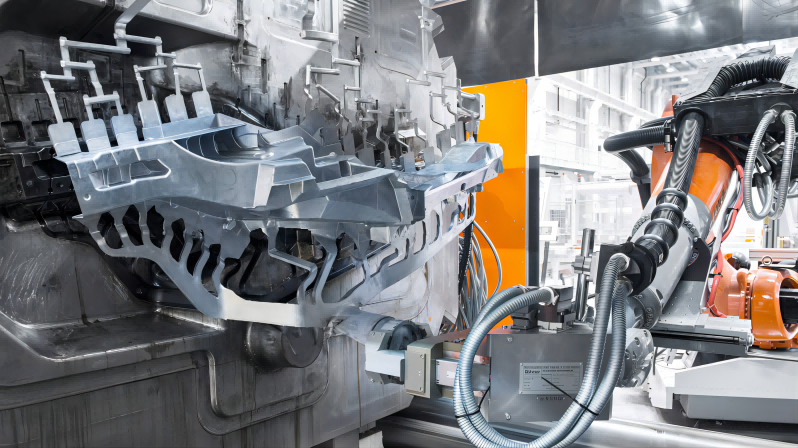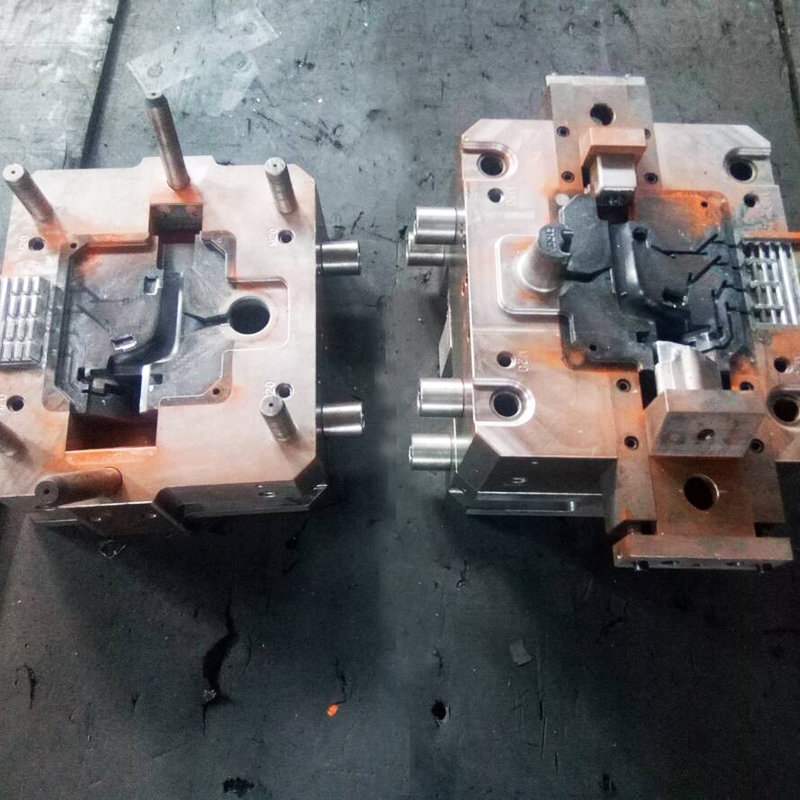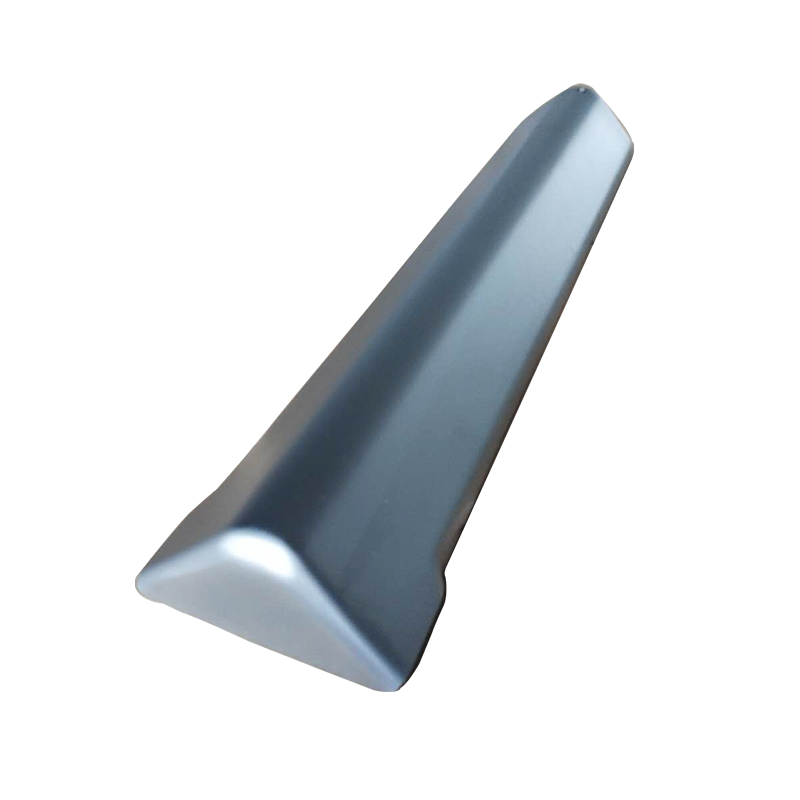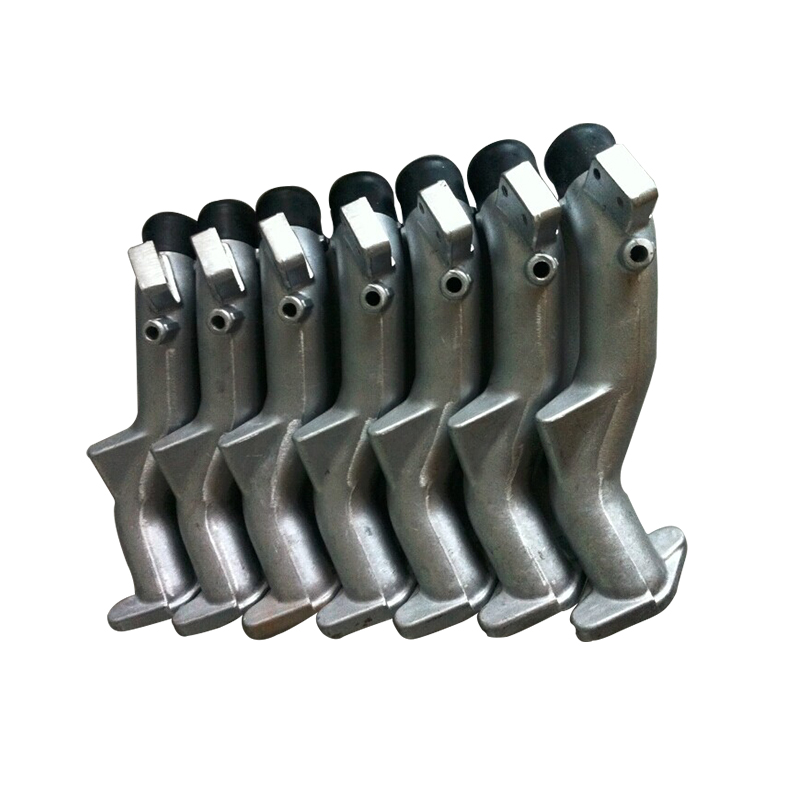Sep 20, 2023
Pros and Cons of pressure casting
Pressure casting, also known as die casting, is a casting method in which molten metal is poured into the pressure chamber to solidify the alloy liquid under pressure and gradually form.
Pressure casting is currently an important molding process method for forming non-ferrous metal castings. The process characteristics of die casting are high strength and hardness of castings, complex shapes, thin casting walls, and extremely high productivity. Die casting molds are the key to pressure casting production, and the quality of die casting molds determines.

The quality and accuracy of die-casting parts, and mold design directly affect the quality and lifespan of die-casting molds. Therefore, mold design is the key to the advancement of mold technology and an important factor in the development of molds.
(1) Characteristics of Pressure Casting
High pressure and high speed are the two main characteristics of the filling and forming process of molten alloys in die casting. The commonly used injection ratio in die casting ranges from a few megapascals to tens of megapascals, sometimes even up to 500MPa. Its filling speed is generally within the range of 0.5~120m/s, and its filling time is very short, usually 0.01~0.2s, with the shortest being only a few thousandths of a second. Therefore, products produced using this method have unique advantages. Castings with thin walls, complex shapes, but clear contours can be obtained. The minimum wall thickness produced by die casting is 0.3mm for zinc alloy; Aluminum alloy is 0.5mm. The minimum diameter of the cast hole is 0.7mm. The minimum pitch of the cast thread is 0.75mm. For parts with complex shapes that are difficult or cannot be manufactured by cutting, even if the output is small, die-casting production is usually used, especially when it is difficult to manufacture using other casting methods or metal forming processes, die-casting production is the most suitable method. The dimensional accuracy and surface roughness requirements of castings are very high. The dimensional accuracy of castings is IT12~IT11, and the surface roughness is generally 3.2~0.8 μ m. Up to 0.4 minimum μ M. Therefore, individual die castings can be used without mechanical processing or only for individual parts. The main advantages of die casting are: (1) the strength and surface hardness of the casting are relatively high. Due to the quenching effect of the die-casting mold and the crystallization under pressure, the surface layer of the die-casting part has extremely fine grains and dense microstructure, resulting in relatively high hardness and strength of the surface layer. The tensile strength of die castings is generally 25% to 30% higher than that of sand castings, but the shrinkage rate is relatively low. (2) High productivity. The production cycle of pressure casting is short, and the cycle time of one operation is about 5 seconds to 3 minutes. This method is suitable for mass production. Although the advantages of die-casting production are very prominent, it also has some obvious drawbacks:
(1) There are often pores on the surface of die castings. This is because the filling speed of liquid alloys is extremely fast, and it is difficult to completely eliminate the gas in the mold cavity, often remaining in the form of pores in the casting. Therefore, general die castings cannot undergo heat treatment and are not suitable for working under high temperature conditions. This is because when the heating temperature is high, the gas inside the pores expands, causing the surface of the die casting to bulge, affecting the quality and appearance. Similarly, it is not desirable to perform mechanical processing to avoid exposing air holes on the surface of the casting.
(2) The types and grades of die-casting alloys are limited. Currently, it is only suitable for die casting of alloys such as zinc, aluminum, magnesium, and copper. For steel materials, due to their high melting point and short service life of die-casting molds, die-casting of steel materials is difficult to apply to practical production. As for a certain alloy category, due to severe shrinkage caused by quenching during die casting, it is only limited to several grades of die casting.
(3) The production preparation cost for die casting is relatively high. Due to the high cost of die-casting machines, long processing cycles, and high costs of die-casting molds, the die-casting process is only suitable for mass production. The significance of die casting mold design is that the mold is the main tool for the production of die castings. Therefore, when designing the mold, efforts should be made to ensure that the overall structure of the mold and the structure of the mold parts are reasonable, safe reliable, and convenient for manufacturing and production. The casting and drainage system of the die casting mold needs to be designed reasonably. The processing and assembly of molds should be in place, with appropriate coordination, and the optimization of die-casting molds is also an important aspect. The degree of excellence of die-casting molds largely depends on the design of the gating system and overflow discharge system. In die-casting production, defects such as shrinkage, cold shuts, or air holes often occur in die-casting parts due to improper selection of control parameters such as mold runner shape, gate and overflow positions, and die-casting force. By optimizing the shape, size, position, and injection process parameters of the sprue and discharge port, these defects can be greatly reduced.
In summary, the reasonable design of die-casting molds is of great significance for producing high-quality castings.
(1) Development History, Current Situation and Trends of Die Casting
The development history of die-casting began in the 19th century and was initially used for die-casting of lead. As early as 1822, Dr. William Church manufactured a casting machine with a daily output of 12000 to 20000 lead types, demonstrating the production potential of this process method. In 1849, J. J. Sturgiss designed and manufactured the first manual piston hot chamber die-casting machine, which was patented in the United States. In 1885, Mersen Thaler studied previous patents and invented the printing die casting machine, which was initially only used to produce low melting point lead and tin alloy cast characters. By the 1860s, it was used for the production of zinc alloy die casting parts. Die casting was widely used in industrial production only at the beginning of the last century, for the production of cash registers, phonographs, and bicycles. In 1904, H. H. Franklin Company in the UK began producing connecting rod bearings for automobiles using die-casting methods, setting a precedent for the application of die-casting parts in the automotive industry. In 1905, H. H. Doehler successfully developed die-casting machines and die-casting zinc, tin, and copper alloy castings for industrial production. Subsequently, Wagner designed a gooseneck pneumatic die-casting machine for producing aluminum alloy castings. This type of die-casting machine uses compressed air to push aluminum alloy into the mold through a gooseneck channel. However, due to issues such as sealing and gooseneck channel sticking, this machine has not been widely promoted and applied. But this design is the first attempt to produce aluminum alloy castings. In the 1920s, Kipp Company in the United States manufactured mechanized hot chamber die-casting machines, but the aluminum alloy liquid had a tendency to corrode steel components on the die-casting machine, limiting the production of aluminum alloys on the hot chamber die-casting machine. In 1927, Czech engineer Josef Pfolak designed a cold chamber die-casting machine. Due to the separation of the crucible for storing molten alloys from the injection chamber, it can significantly increase the high-pressure injection force, making it more suitable for industrial production requirements, overcoming the shortcomings of the pneumatic hot chamber die-casting machine, and thus taking an important step forward in die-casting technology. The birth of large-scale die-casting machines in the 1950s opened up many new fields for the die-casting industry. With the development of die-casting machines, die-casting processes, die-casting molds, and lubricants, die-casting alloys have also evolved from lead alloys to zinc, aluminum, magnesium, and copper alloys, and finally to ferroalloys. With the continuous increase of the melting point of die-casting alloys, the application range of die-casting parts has also expanded.
(2) The development of China's die-casting industry has made significant progress in the past half century. As an emerging industry, it develops rapidly with a good momentum of 8% to 12% every year. At present, China has over 2600 die casting factories and related enterprises, nearly 10000 die casting machines, and an annual production of over 500000 tons of die castings. Among them, aluminum die castings account for 67.0%, zinc die castings account for 31.2%, copper die castings account for 1.0%, and magnesium die castings account for 0.8%. Among the die-casting factories and related enterprises in China, there are over 2000 die-casting factories, accounting for over 80% of the total number of enterprises. There are nearly 398 die-casting machine and auxiliary equipment enterprises, mold enterprises, and raw and auxiliary material enterprises, accounting for 13.7%. There are a total of 112 scientific research, universities, societies, and other units, accounting for 3.8% of the total. In terms of die-casting machine production, there are about 20 die-casting machine production enterprises in China, with an annual production capacity of over 1000 units. The supply capacity of die-casting machines is very strong. The quality of small and medium-sized die-casting machines is relatively good, while large die-casting machines and high-performance real-time controlled die-casting machines still need to be imported. Die-casting machines with a capacity of over 2000 tons are under development. Various situations indicate that China's die-casting industry is already quite large. However, compared to powerful die-casting countries, China's die-casting industry still has a significant gap. The scale of Chinese die-casting enterprises is relatively small, their quality is not high, their technical level is backward, and their production efficiency is low. Although China has a certain quantity advantage in the production of die-casting compared to advanced countries such as the United States and Japan, die-casting enterprises in China are mainly small factories, so there is a significant gap in management level and work efficiency compared to them. In addition, although the quality of small and medium-sized die-casting machines produced in China is good, large die-casting machines and high-performance real-time control die-casting machines still need to be imported, with over 100 die-casting machines imported each year. From this, it can be seen that China cannot be considered a die-casting power, it can only be a die-casting power. In recent years, due to the rapid development of Chinese industry, the die-casting industry has gradually entered many markets. With China's sedan industry die-casting market as the pillar, China's die-casting industry has rapidly expanded in multiple directions, including the motorcycle industry, agricultural vehicle industry, infrastructure construction market, toy market, and home appliance industry, and its momentum is still on the rise.
(3) The development trend of the die-casting industry is that the entire die-casting process is completed on die-casting machines. Therefore, with the demand for the quality, output, and expanded application of die-casting castings, new and higher requirements have been put forward for die-casting equipment. Traditional die-casting machines can no longer meet these requirements. Therefore, new die-casting machines, new processes, and new technologies have emerged. For example, in order to eliminate air holes, shrinkage cavities, and porosity inside die castings and improve the quality of castings, dual punch (also known as precision, speed, and density) die casting has emerged; In order to die-cast castings with embedded parts and achieve vacuum die-casting, a fully vertical die-casting machine with horizontal parting has emerged; In order to improve the injection speed and achieve an instantaneous increase in injection force to effectively pressurize the molten alloy and improve the density of the casting, a three stage injection system die-casting machine has been developed. For example, in the die-casting production process, in addition to being equipped with automatic pouring, automatic pick-up, and automatic lubrication mechanisms, a complete set of testing instruments is also installed to detect and control various process parameters during the die-casting process. They are display and monitoring devices for injection force and injection speed, automatic control devices for injection force, and applications of electronic computers.
Ningbo Fuerd was founded in 1987 and is a leading full-service die Casting Tooling, aluminum die casting, zinc die casting, and gravity casting manufacturer. We are a solution provider offering a wide array of capabilities and services that include engineering support, designing, molds, complex CNC machining, impregnation, tumbling, chrome, powder coating, polishing, assembly, and other finishing services. We will work with you as partners, not just suppliers.
NINGBO FUERD MECHANICAL CO., LTD
Website: https://www.fuerd.com



